Cahokia Mounds - North American Pyramids
Here is a visit I took to the Cahokia Mounds also known as the Monk Mounds right at the Southern border of Illinois.
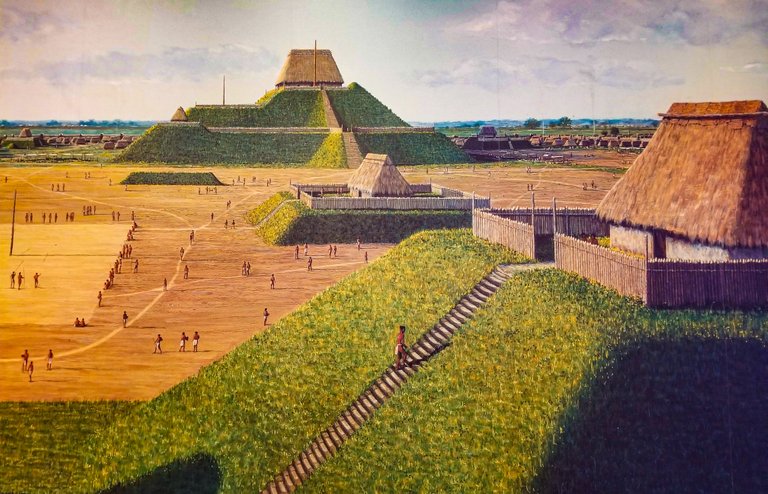
This is a mural at the entrance of the museum next to the mounds. This depicts what it must have looked like at its prime around 900 AD.
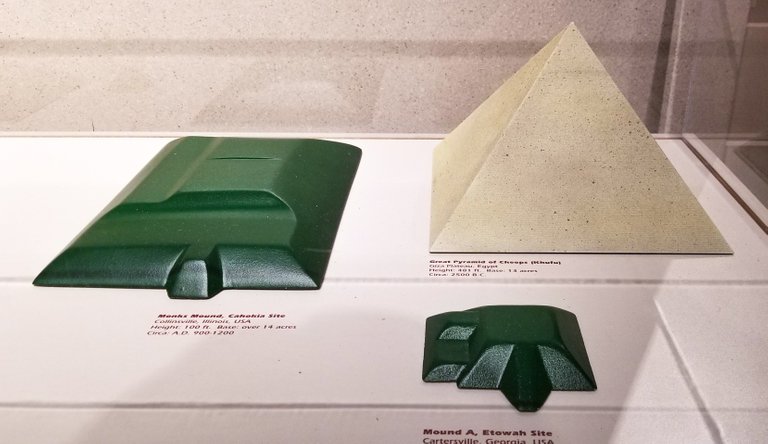
This mound is the largest mound in North America and has an even larger footprint than the Great Pyramid of Cheops. I've been to quite a few different Native American mound sites in the Midwest. Most are effigy mounds in the shape of animals but these ones at Cahokia seem to have taken inspiration from the stepped pyramids of South America. Perhaps they had travelers and traders that wanted to bring their own version back to the Midwest.
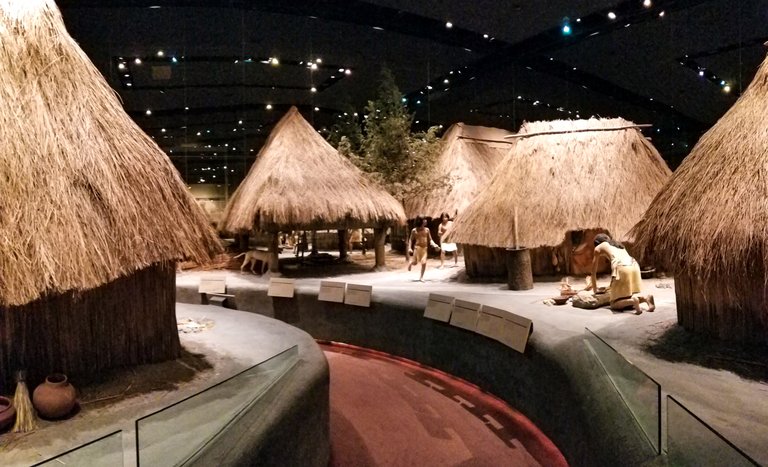
The mounds were surrounded by numerous huts and the inhabitants had quite a few interests other than just hunting, gathering and farming.
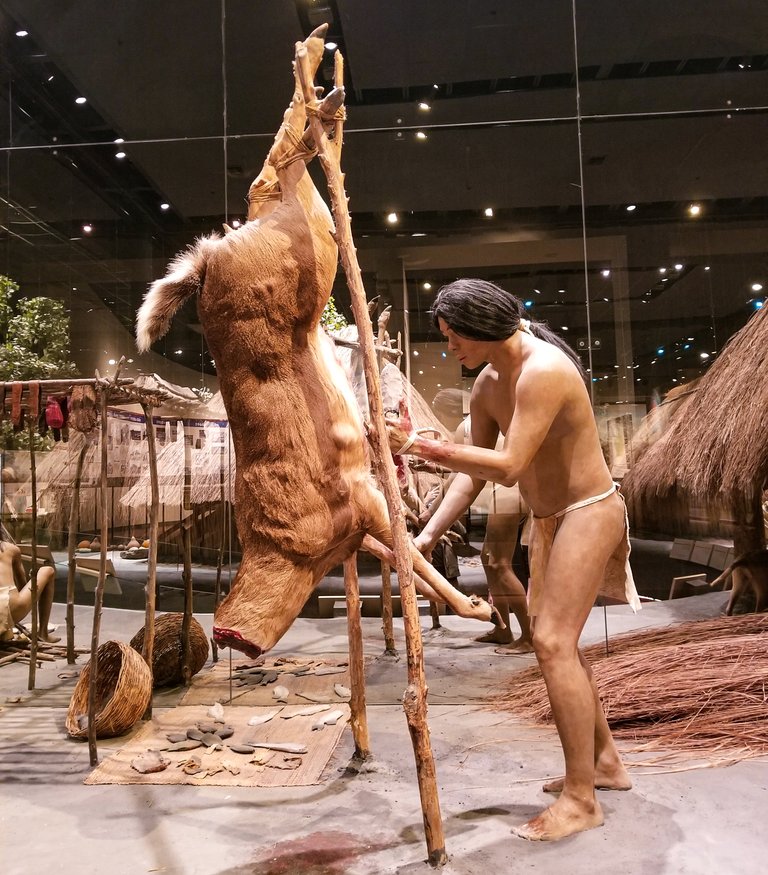
Deer are quite plentiful in the Midwest and probably were a main source of meat for this culture.

They would use spears, arrows and had many different sizes and shapes for hunting different types of game. They would also fish in the rivers nearby mainly the Mississippi river. I can imagine the large spear head being used to pierce a huge catfish or finish off a wounded deer for dinner.
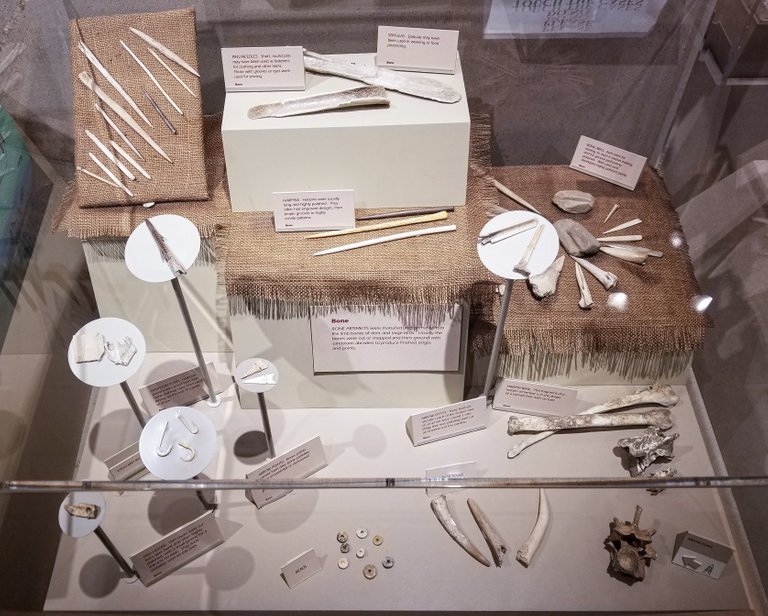
They also had finer tools like fish hooks and needles that were made out of large snail shells.
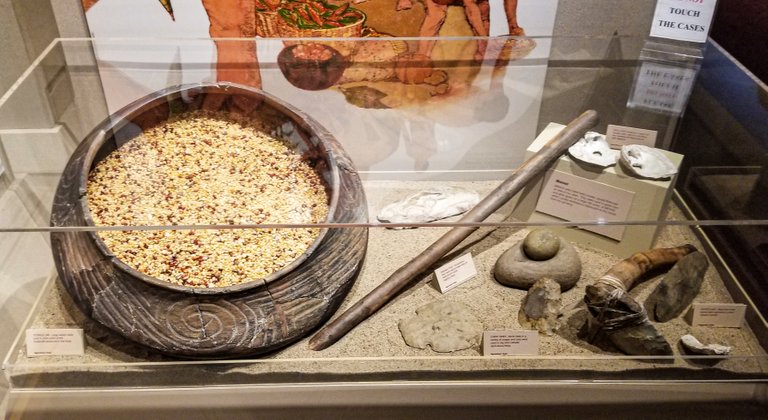
Crops were also cultivated mainly corn, squash and other seed bearing plants. They built large clay pots to store corn and seeds for use during the winter. I would imagine they probably made some kind of tortilla out of the corn.
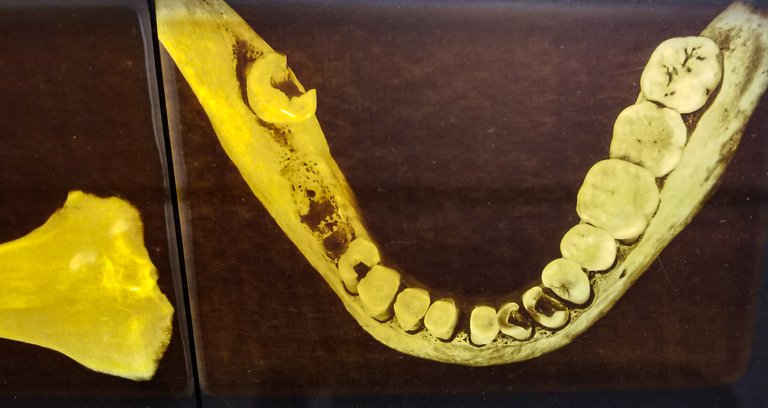
Near the middle of the city archaeologists found some of the remains showed signs of malnutrition. They probably ate too much corn and not enough vegetables and meat, quite similar to our modern day city dwellers eating too much fast food.
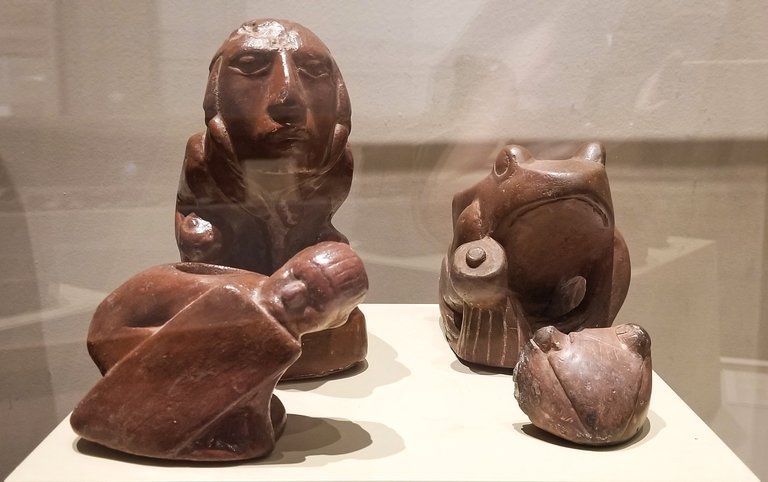
There must have been plenty of time for recreation in this society. Archaeologists uncovered quite a few varieties of pipes made out of pipe stone. I'm not sure exactly what they were smoking but they took care to make interesting sculptures for this habit. Most of the shapes are of different animals and some human figures.
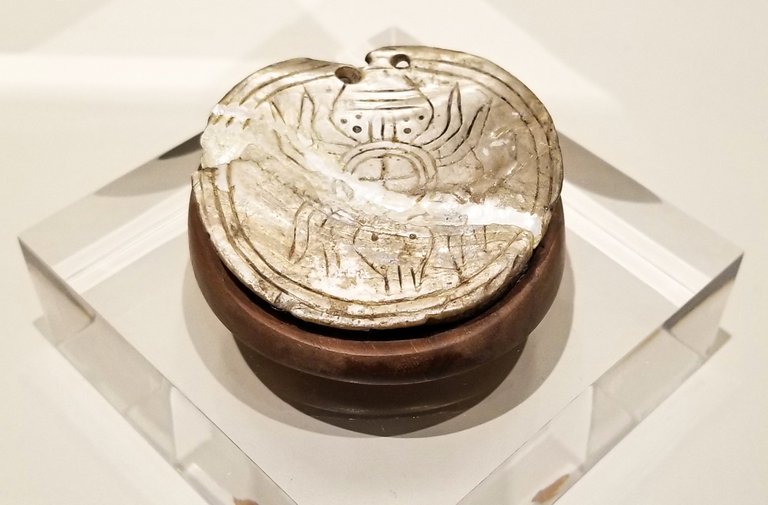
Here is an interesting spider pendant made out of abalone. This might have been a status symbol or possibly a cherished gift.
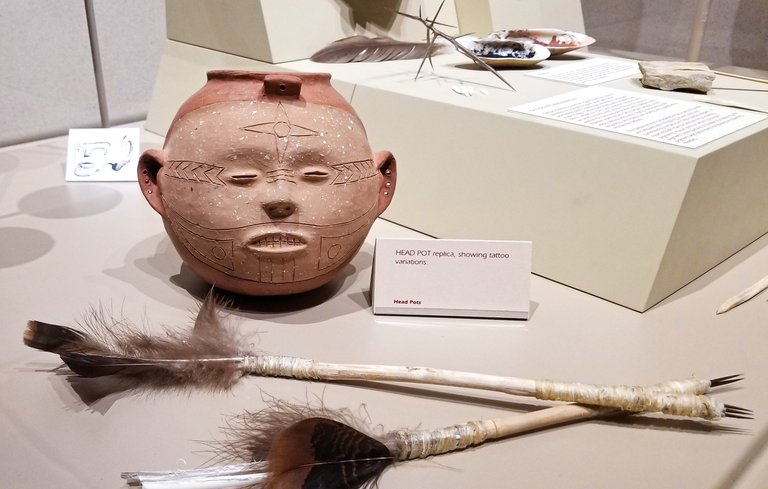
Tattoos were also a part of their culture. This clay pot records some of the patterns they would use to tattoo themselves. The feathered sticks and thorns from a thorn bush were used to pierce the skin, I'm not sure what they used for ink, maybe walnut ink...
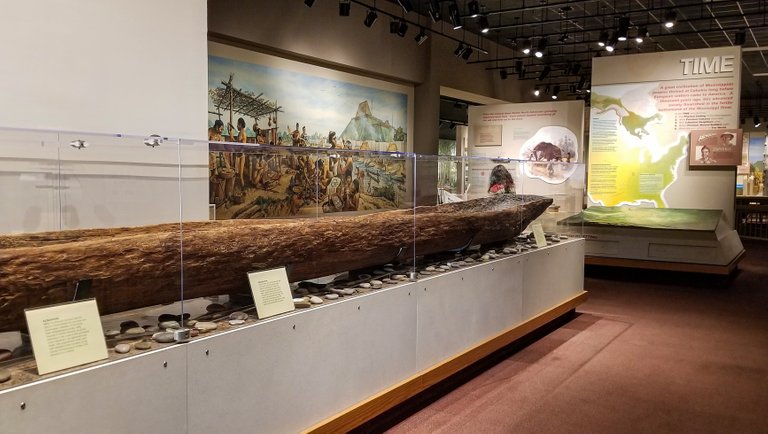
Trading along the Mississippi river was part of their routine as well. Large trees would be cut down and hollowed out to make a boat. These mounds are fairly close to the river and I would imagine various tribes would visit here to trade via the river.
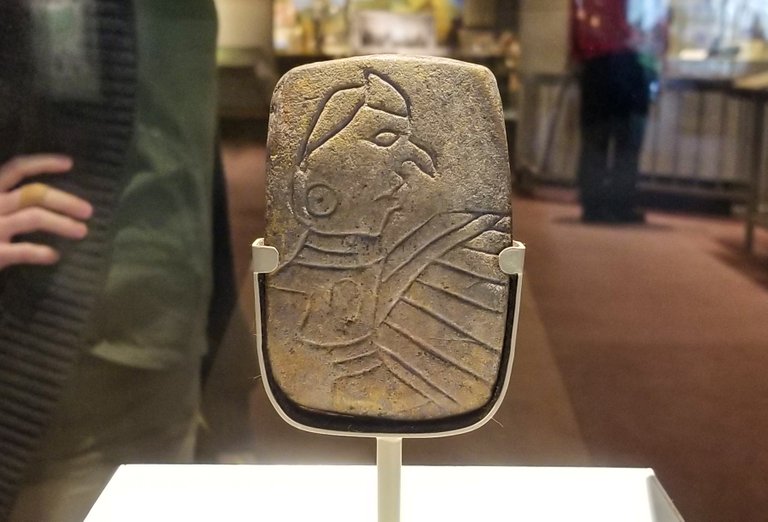
A few clay tablets were uncovered around the mounds depicting different animals. This one is called the birdman tablet because it shows a human figure dressed like a bird. The back of it has a snakeskin pattern etched into it. Perhaps this was used to record an event or remember a tribal leader in the past...
The interpretive center was quite impressive and had many more artifacts. Now it is time to go outside and see what the mounds look like today.
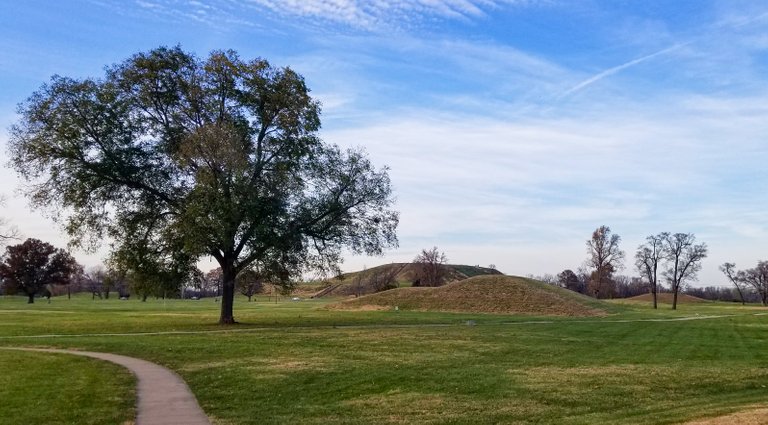
There are roughly 80 mounds in this area. Most are fairly small but some are quite large. You can see them as you walk towards the larger Monk mound.

The trees show a bit of scale compared to the smaller mounds.
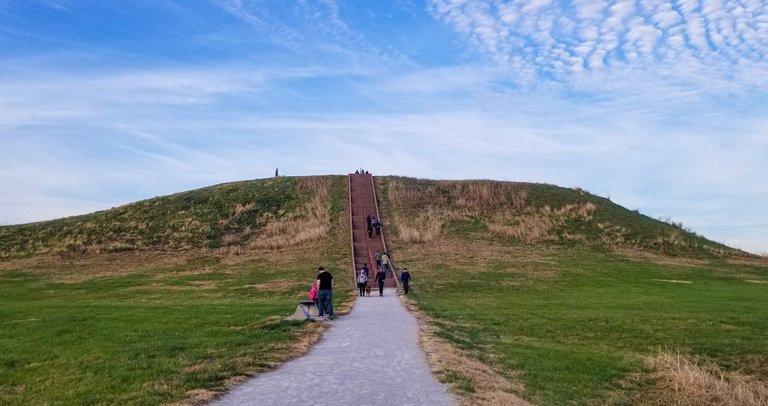
Here it is the big monk mound. It must have been quite a site at its zenith.
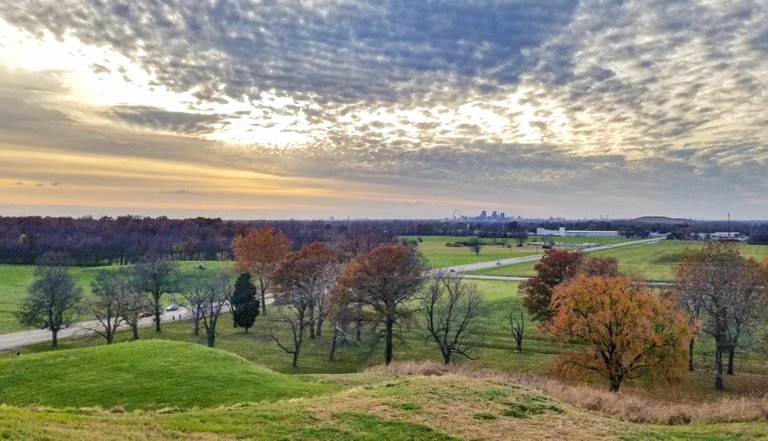
On top you can see for miles around and you can even see the St. Louis arch off in the distance. Every time I end up going to Missouri I usually end up stopping here to learn something new about the mounds. It's only about 30 minutes away from the City of St. Louis so you can see the big arch and the mounds easily within a few hours if you ever visit.
That's all for now thanks for looking :-)
Those are really cool! I'll have to add this to my list of places to stop. This past spring we were at the Pharr Mounds in Northern Mississippi but it was no where this interesting. Thanks for sharing these!
I wonder if all the mound builders were part of some general tribe. If you ever get a chance you should see the effigy mounds in Iowa also right next to the Mississippi river.
I'll add a pin to my map. Should be not far away from there on our coming trip to Arkansas to dig Diamonds and Crystals again!
Yeah it would probably be another 4 hours up to get there.
Thank you for sharing this amazing post on HIVE!
Your content got selected by our fellow curator @priyanarc & you just received a little thank you via an upvote from our non-profit curation initiative!
You will be featured in one of our recurring curation compilations and on our pinterest boards! Both are aiming to offer you a stage to widen your audience within and outside of the DIY scene of hive.
Join the official DIYHub community on HIVE and show us more of your amazing work and feel free to connect with us and other DIYers via our discord server: https://discord.gg/mY5uCfQ !
If you want to support our goal to motivate other DIY/art/music/homesteading/... creators just delegate to us and earn 100% of your curation rewards!
Stay creative & hive on!
Muy interesante tu explicación, y las fotografías muy buenas, gracias por compartir.
Gracias, así es como se compara el montículo con las pirámides escalonadas. Tienen una influencia similar.
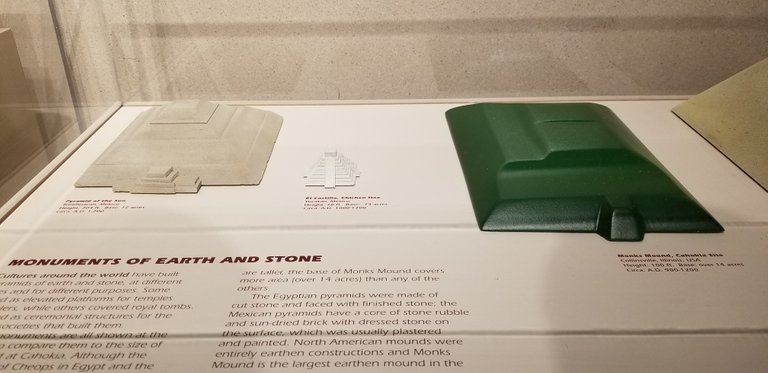
Wow! Really interesting place! All this civilizations. I recenty thought: "how must look ideal civilization, ideal society".
PS: Miss you music videos)))
Yeah their civilization lasted quite a while, who knows how they ended. I gotta get back to recording again now that my shoulder if finally healed.
What happen?
Im just recently come back from Bulgaria and dont read all your post and dont know what happen. Everething is normal? Not critical?
It was just a pulled biceps tendon, unfortunately it takes six months to a year to finally heal. It barely hurts anymore but now I need to get back into the mindset of playing guitar again lol. Fortunately no surgery was required.